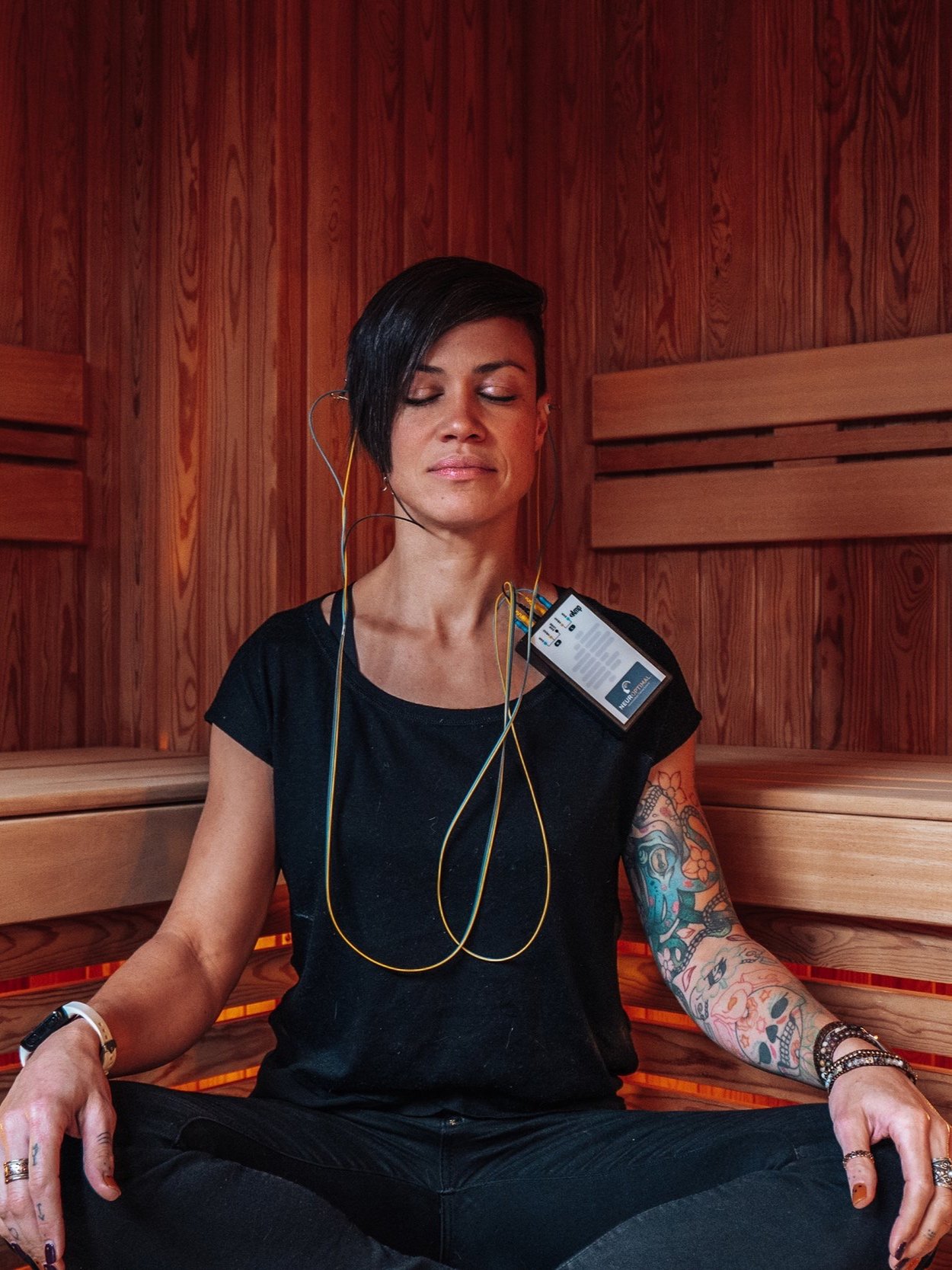
NeurOptimal® Neurofeedback
Train Your Brain. Transform Your Life.
Sometimes, no matter how hard you work in therapy or self-growth, your nervous system feels stuck. You may still wrestle with anxiety in your body, restless sleep, or difficulty focusing—even when you “know better.” That’s because your brain patterns are running on outdated loops.
NeurOptimal® Neurofeedback offers a gentle, non-invasive way to help your brain reset itself—like giving your nervous system a tune-up. This isn’t about “fixing” you; it’s about helping your brain return to its natural state of balance, resilience, and flexibility.

What Is NeurOptimal Neurofeedback?
NeurOptimal® is the most advanced form of Dynamical Neurofeedback®, a cutting-edge technology created by Zengar Institute. Unlike older neurofeedback systems that “train” your brain toward specific goals, NeurOptimal simply gives your brain real-time feedback about its own activity—allowing it to self-correct and optimize naturally.
Think of it as holding up a mirror to your brain. When your brain “sees” what it’s doing, it adjusts—improving regulation across the board. The result? Greater clarity, calm, focus, and emotional balance.
What to Expect in a Session
Your session is simple, relaxing, and takes about 45 minutes.
We’ll place small sensors on your scalp and ears to monitor your brain’s electrical activity.
You’ll settle in with headphones and listen to calming music. Occasionally, you’ll hear tiny skips in the sound—this is the feedback prompting your brain to self-adjust.
At the beginning of each session, you’ll complete a short checklist so we can track your progress together.
Most clients describe the experience as deeply calming, restorative, and even meditative.
How Neurofeedback Can Help
Clients choose NeurOptimal® Neurofeedback to address concerns such as:
Anxiety, stress, and overthinking
Sleep issues, nightmares, or insomnia
Difficulty focusing or sustaining attention
Feeling “stuck” despite therapy or self-help work
Low resilience and difficulty bouncing back from stress
Persistent body tension or dysregulation
Rather than chasing symptoms, NeurOptimal helps your brain function more efficiently across every area of life. Many clients notice improvements in both mental clarity and physical wellbeing after only a few sessions.

Why Pair Neurofeedback With Therapy?
Neurofeedback is powerful on its own, but it becomes even more transformative when paired with trauma therapy or intensives. By calming and strengthening your nervous system, you’ll feel more grounded and able to do the deeper therapeutic work—without feeling overwhelmed.
Ready to Experience the Difference?
If you’re curious about how neurofeedback in Chattanooga can support your growth, reach out today to schedule your first session. This is a safe, effective, and non-invasive way to help your brain help itself.
-

Accelerated Resolution Therapy (ART)
ART uses gentle eye movements and visualization to help your brain release stored trauma quickly and effectively. Many clients notice significant relief in just 1–3 sessions, making it a powerful tool for resolving painful memories and shifting negative beliefs.
-

Brainspotting (BSP)
Brainspotting uses the connection between your gaze and your nervous system to access and heal trauma at a deep level. By focusing on specific eye positions, your brain and body are able to process unresolved experiences in a way that feels natural and profound.
-

Neurofeedback
Neurofeedback helps retrain your brain to regulate itself. By receiving real-time feedback, your brain learns to spend more time in calm, focused, and balanced states—so regulation becomes your default rather than the exception.
-

Enneagram
The Enneagram is an insightful framework for understanding your core motivations, fears, and adaptations. It can help you recognize patterns that no longer serve you, deepen self-awareness, and create more authentic connections with others.
Neurofeedback vs. Talk Therapy vs. Trauma Intensives
Each service at Wild Oaks Counseling is designed to meet you where you are. Here’s how they differ—and how they can complement one another:
Traditional Trauma Therapy (Talk Therapy)
Best for: ongoing support, exploring patterns, learning skills, and deepening insight
Focus: conversation-based, paced over weeks/months
Client role: reflective, open to gradual change
Trauma Intensives
Best for: rapid, focused breakthroughs on trauma, relationships, or attachment issues
Focus: immersive 2–3 hour sessions over 1–3 days
Client role: highly engaged, motivated for deep change in a condensed format
Neurofeedback (NeurOptimal®)
Best for: nervous system regulation, sleep issues, anxiety, focus, and “stuck” symptoms that remain even after insight
Focus: brain-based, non-invasive technology that trains the nervous system to self-correct
Client role: relax and allow the brain to process—no effort required
Together, these options create a luxury-level, customized therapy plan: insight + breakthroughs + brain retraining.

FAQs for Neurofeedback
Q: What’s the difference between neurofeedback and talk therapy?
Talk therapy builds awareness and insight, while neurofeedback retrains the nervous system so your body feels calmer and more regulated.
Q: Is neurofeedback better than trauma intensives?
Not “better”—just different. Intensives target and resolve specific trauma stories quickly, while neurofeedback strengthens your brain’s overall ability to regulate and heal. Many clients choose both for maximum results.
Q: Can I combine neurofeedback with therapy?
Absolutely. Neurofeedback often makes therapy easier and more effective by calming the nervous system, so you can process trauma without overwhelm.

